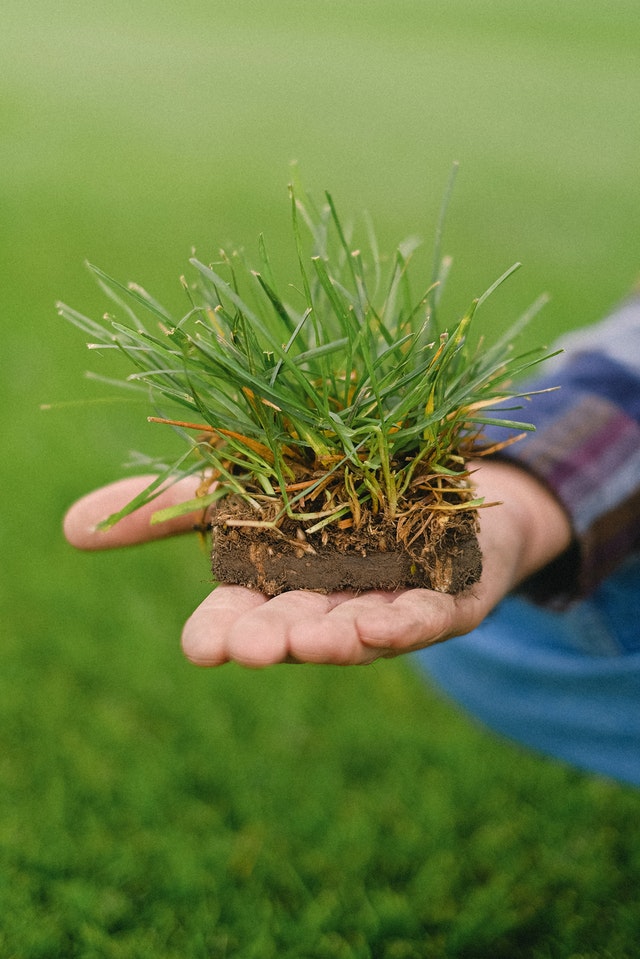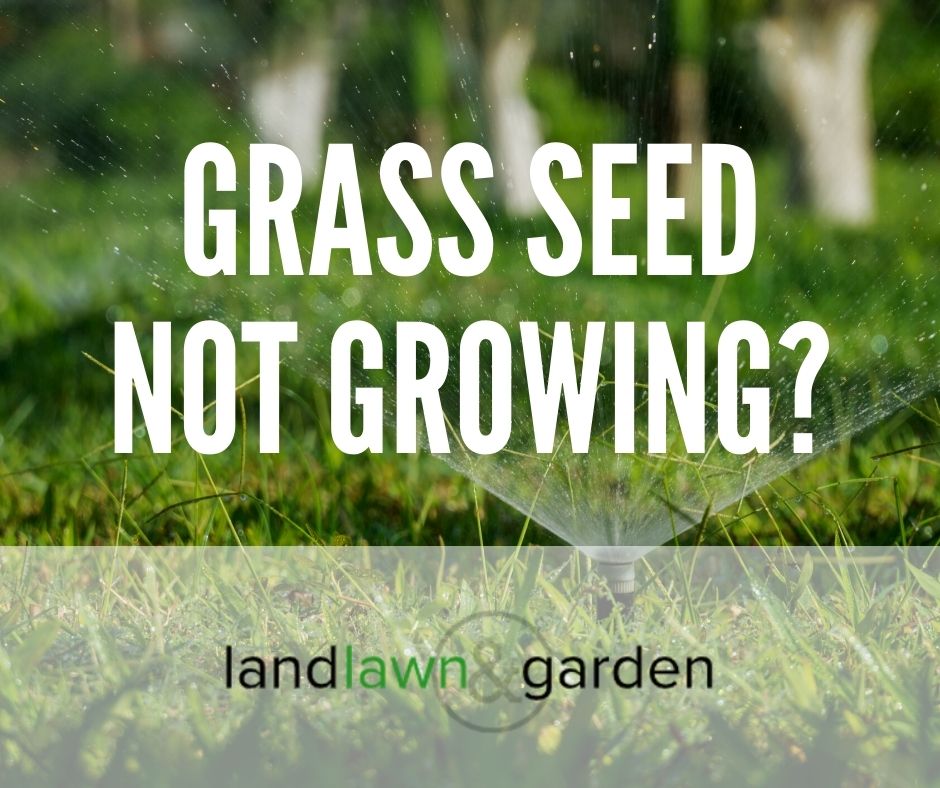It can be frustrating when you have done everything you needed to, and your grass seeds still don’t want to grow. It feels like your hard work was all for nothing, and even worse, you’ve wasted your time and your money. Dispiritedly you ask yourself, “why is my grass seed not growing?”
The most common cause of grass seed that won’t grow is when seeds fail to germinate. Germination is the process where it all starts, and if the following conditions aren’t perfect, your grass seeds can’t germinate and, therefore, cannot grow.
- Air
- Water
- Heat (temperature)
- Light
These four elements are vital for germination, but there are other necessary steps you need to follow to get the lawn you desire. This article will discuss the causes of grass seed that won’t grow and provide solutions to fix it.
What Causes Grass Seed Not To Grow?

There are three main reasons why your grass seeds are struggling to grow, these include:
Lack Of Oxygen (compacted soil)
It is imperative to aerate your soil before you plant your grass seeds. If the soil is compacted, the water cannot enter and will only remain on the soil’s surface. You could say that the ground is suffocating, and the grass seeds need oxygen to germinate.
If your soil is compacted, respiration cannot break up the food store within the seed, therefore, failing to provide the seed with energy to grow.
Solution
Before you sow your grass seeds, break up and aerate the soil. Ensure your seedbed is level and worked over to a crumbly, fine tilth, free of bumps and lumps.
Too Little Or Too Much Light
If grass seeds are sown too deep under the soil, they can’t receive the sufficient amount of water, air, and light needed to germinate. If your grass seeds are too close to the soil’s surface, it does not receive enough heat and moisture required for germination.
The seeds are also exposed to birds and won’t be protected from extreme heat and other harsh weather conditions.
Solution
Instead of just throwing the grass seeds over the lawn, rake your seeds into your soil to ensure they are deep enough in the ground (not too deep) to reap all the benefits of air, water, light, and temperature.
Too Much or Too Little Water
We all know the saying “too much of a good thing is bad”, and when it comes to over-watering your garden, the same applies. Over-watering your grass seed can cause it to drown.

The seeds should not be completely submerged in water; otherwise, they won’t receive any air and won’t be able to germinate at all. Under-watering your grass seeds won’t work either because the soil will be too dry to create the amount of moisture for the seeds to start germinating.
Solution
Driving a screwdriver into the ground is a great little trick to determine if the soil is wet enough for germination. If you can reach 6/7 inches deep, then your soil contains a sufficient amount of water, and your seeds will be able to germinate.
If it is less than 6/7 inches, give it some more water, and if it is over 6/7 inches, you have over-watered your lawn. In this case, do not give any more water until enough water has evaporated.
How To Plant Your Grass Seeds Step By Step
To most homeowners learning how to plant grass seeds is a necessity. Follow the easy step-by-step guide below to get the best results.
Step 1
Select a high-quality grass seed and make sure to check if the seeds are an NTEP rated variety.
The NTEP (National Turf Evaluation Program) evaluates grass seeds independently. They are bred for luscious green grass resistant to insects and diseases and have a high tolerance for drought and extreme weather conditions.
Make sure that you purchase grass seeds that will thrive in your region and sow your seeds in mid-spring or early autumn.
Step 2
Prepare your soil by loosening the top three inches and remove sticks and twigs as you go along. If there are large clumps of soil, break them up and spread them in with the rest of the soil. Level the soil out over the entire area where you are going to sow the grass seeds.
Don’t use weed killers before or after sowing; otherwise, it will kill the seeds, and your grass won’t grow. Ensure your that the soil has a pH of 6.2 to 7 and all the essential nutrients such as phosphorus, nitrogen, and potash (marked as P, N, and K on fertilizer bags).
Be careful of too much phosphorus as it can lead to over-blooming algae. Always use a soil test kit to determine which nutrients you need to add to your soil.
Step 3
Using your hand, spread the seeds evenly over the prepared soil. For the best results, you need to have 16 seeds for every square inch. If you exceed this amount, your seedlings will be fighting over nutrients and growing room, resulting in thin or weak grass in that area.
Step 4
Cover the seeds (whole area) with a good coverage such as;
- Mulch and fertilizer mix
- Straw (free of seeds)
- Compost that has been run through a sifting screen to get rid of the materials that have not decomposed yet.
- Polyethylene film (clear works best to avoid the soil getting too hot)
- One layer of mulch, followed by a ¼ inch sawdust, light peat moss, and finely shredded newspaper.
Step 5
A grass seed that dries out dies out! It would be best to make sure that the top ¼ to ½ inch layer of soil is always moist. Do not water your seedlings vigorously, as it can wash your seeds away. Use a misting nozzle to lessen the water force and be careful not to make the soil soggy.
Watering the seeds until the grass emerges is a very delicate and vital process. You need to monitor the moisture in the soil and keep it at a constant. Water your seeds in the morning and during the afternoon when temperatures start rising.
Wrapping Up
Germination is an essential part of growing grass from seeds. This delicate process needs to be nurtured until the grass has emerged over the entire lawn. Some seeds may be a bit deeper, so care is still required even after you see green grass starting to appear above the surface of the soil.
If you use a high-quality seed, prepare your soil correctly, and do everything that is required for the seeds to germinate, your hard work will pay off, and you will have a beautiful green lawn in no time!

Kevin is the owner of Land Lawn & Garden. In addition to taking a lot of pride in his lawn at home, he also helps manage the family land. You can find more about him here.

